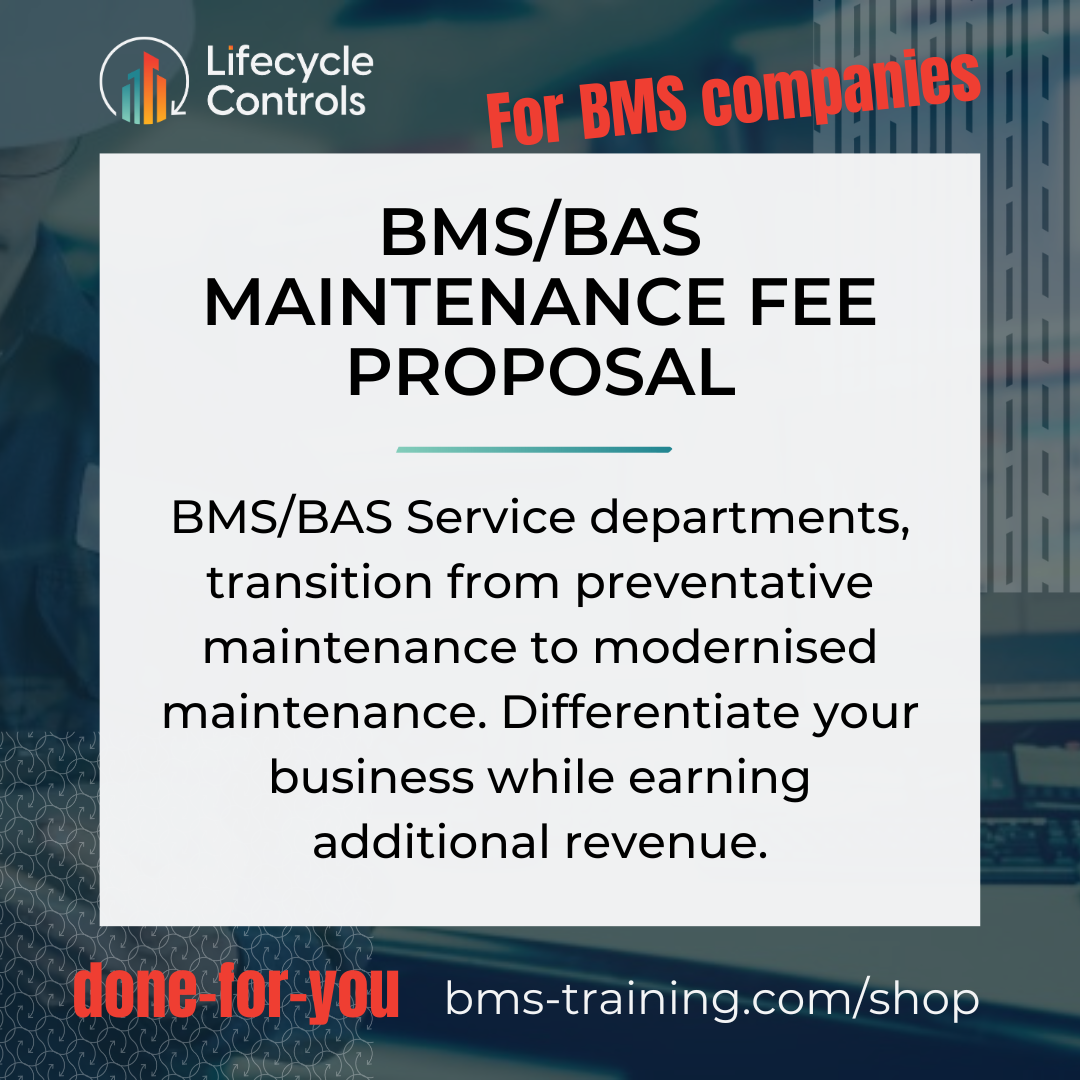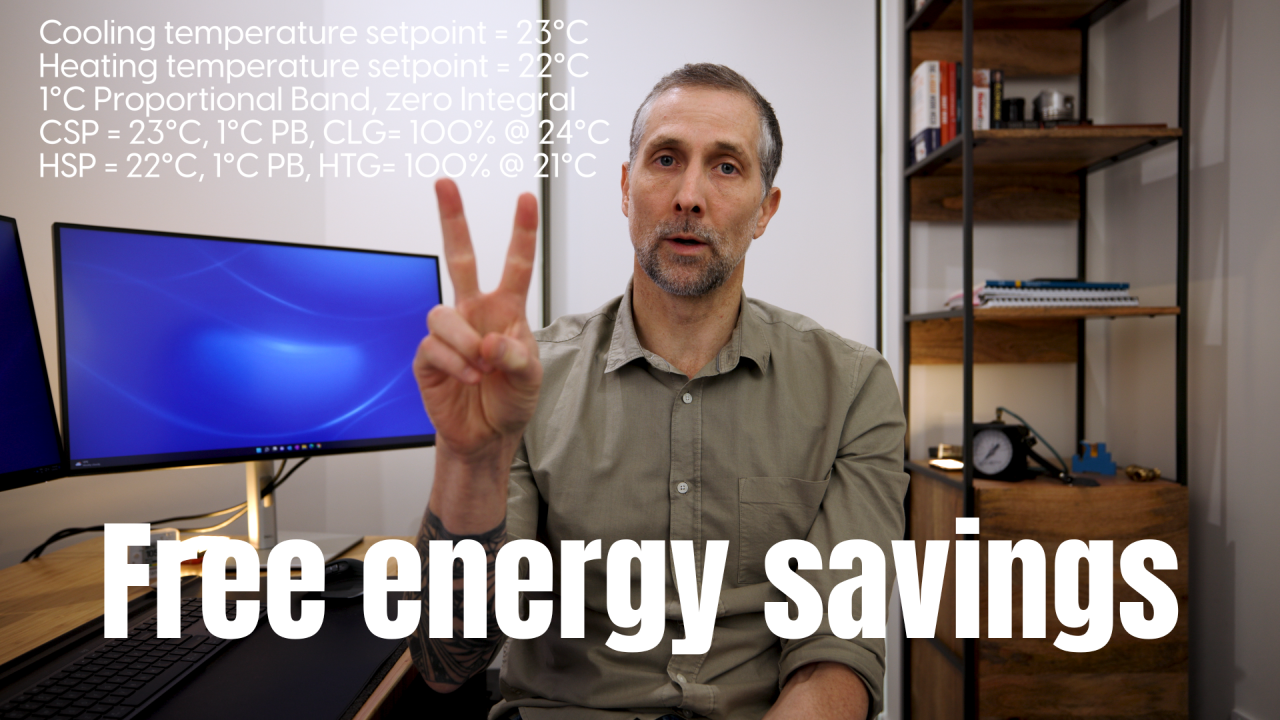What does BMS tuning mean?
Tuning means different things to different people.
During the final stages of a new construction project, tuning is an excuse to move defects that may hold up practical completion into the next 12-months of the Defects Liability Period. E.g. the chillers aren't staging up very well; everything starts and stops okay, but it's just not working very well. How many times have you heard: "this is a tuning function, we can tune this over the next 12 months"? To be honest, we have all played that card. So, in some cases, tuning is a get out of jail free card.
Traditional tuning
Most engineers will say that tuning is the adjustment of PID (proportional, integral and derivative) parameters in control loops, resulting in stable control of the outputs (valves, dampers and VSD's) to maintain a process variable (temperature, pressure and volume) to a set point. This, of course, is tuning; and in the past this is all that tuning was. However, in my opinion, this isn't anything special; it should be something that just happens and not something clients pay for every year in their annual maintenance contracts. Technically, once a PID loop is set up, it shouldn't need re-tuning every year.
Modern-day tuning
In my opinion, tuning is staring at the screen for hours, thinking about each system as a whole and not just the localised PID loops. Tuning is analysing how systems interact with each other and how small changes to any one system affect other interconnected systems, and the resulting overall effect on control, comfort and ultimately, energy efficiency.
For example: we know that reducing the condenser water temperature will improve the efficiency of the chillers, and, reducing the condenser water temperature requires an increase in cooling tower fan speed and therefore, power consumption.
At some point the increasing cooling tower fan speed, and power consumption, may be greater than the improved efficiency of the chillers. Tuning is finding that sweet spot.
Tuning starts with prep work and a plan, because tuning isn't a technician sitting on a drum of cable in a plant room with his laptop plugged into a controller, like it was 20 years ago. Firstly, we build new software points to monitor COP (Coefficient of Performance) for each chiller, all chillers, and the whole chilled water system. COP is the relationship between the electrical power (kWe) drawn by the chiller and the thermal power (kWr) generated by the chiller. As the COP increases, so does the efficiency of the chiller.
Example
Let’s say we have two cooling towers delivering a condenser water temperature of 21°C to two chillers. As we override the condenser water temperature setpoint down to 20°C, we will see each chiller's COP increase (more efficient), the cooling tower fan speed increase (using more power), and the total chilled water system COP increase. Great result, we proved that using more cooling tower fan power resulted in an overall system improvement. Now, as we continue to reduce the cooling tower condenser water temperature setpoint, we may notice that each chiller's COP continues to increase, but that the overall chilled water system COP starts to decrease. We have now determined at what point reducing the condenser water temperature, although improving chiller efficiency, has resulted in the total chilled water system to be less efficient. Not all chillers and cooling towers are the same; we can't apply the same settings for every system. Each building needs to be tuned.
This is tuning!
Next, set up trends on each chiller's calculated COP, the cooling tower fan speed and the overall chilled water system COP. Group all those individual trends into a single trend and bind it to the chiller graphic (not in some folder buried in the server somewhere). Now, you have something to analyse. Click on the trend group from the chiller graphic and you can see the history and the relationship between chiller efficiency and whole system efficiency.
Notes
COP= kWr / kWe
kWr = (Return temperature (°C) - Supply temperature (°C)) x Flow (l/s) x 4.181
Total chilled water kWe is the kW's from the chillers + kW's from pumps + kW's from the fans.
If you don't have a thermal meter on the supply chilled water to the field, you can calculate the total chilled water kWr from the sum of each running chillers kWr.
Some people use the kWr from the chiller High-Level Interface. I prefer to use the differential temperature and flow (you can calculate l/s from the evaporator differential pressure transmitter if you don't have a dedicated flow meter). I believe that not all chiller controllers calculate kWr properly.
Featured - Latest published online course
BMS for mechanical consultants course
This course was developed by a BMS consultant for mechanical consultants involved in Building Management System projects. Learn how to reduce risk to your company, your client, and the BMS contractor.
Self-paced online course.
12 hours of video lessons.
Training manual (+90 pages).
BMS design examples.
A sample of Lifecycle Controls BMS specification clauses are provided to assist with learning. You can use these in your own specification.
Online shop
Free control strategy mini courses
Create a free account in our Learning Management System and complete the free chilled water control system mini-course. A certificate is provided at the end of the course. A copy of the control strategy is provided as a Microsoft Word document for you to modify in your own BMS designs.
Please join our newsletter
To be notified when new courses, design templates, and digital products are published.
For updates to coaching availability.
For updates to business-to-business consulting services.
New Youtube video releases and occasional updates on what I am up to.
I will not fill up your inbox with crap
Bryce Anderson
I am an independent Building Management System consultant based in Australia. I started in the BMS industry in 1998 and initially worked for BMS companies for the first 15 years of my career (2 years in South Africa, 9 years in London, and 4 years in Melbourne). In 2014 I transitioned into BMS consulting, saw a massive gap in the lack of specialist BMS consulting, and started Lifecycle Controls in 2017.
My focus is currently on BMS technical training, coaching, and B2B consulting for BMS companies and mechanical consultancies. Because, fixing one project at a time was making no difference. Training thousands of engineers will :-)





































